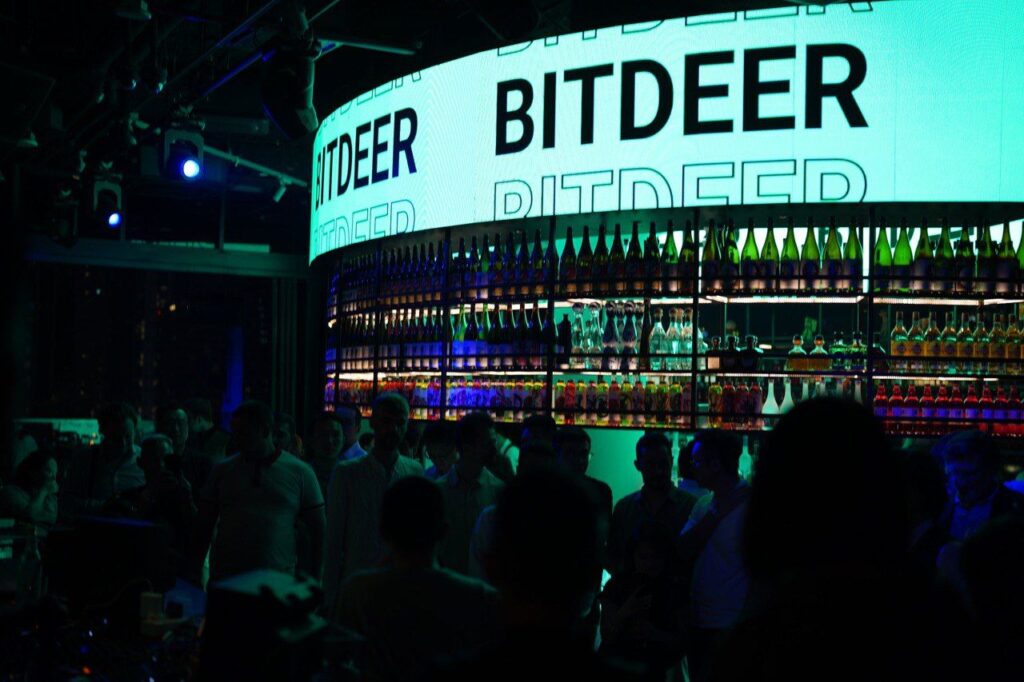Bitcoin mining is heavily reliant on application-specific integrated circuit (ASIC) chips, which serve as the backbone of the industry. These specialized machines are designed for one primary purpose: to solve the SHA-256 algorithm associated with Bitcoin as efficiently as possible to earn block rewards.
The Power of ASIC Machines
ASIC machines have demonstrated remarkable capabilities. For instance, the Antminer S19, one of the most popular ASIC models, can perform 82 trillion computations per second—an astounding figure that surpasses the number of stars in the Milky Way by a factor of 820. Currently, the ASIC manufacturing market, valued at around $30 billion, is primarily dominated by Bitmain, a Chinese company that supplies approximately 80% of Bitcoin’s total hashrate.
However, Singapore-based Bitdeer (BTDR) aims to disrupt the status quo by introducing a new ASIC chip architecture. The company claims that these innovative chips will significantly enhance efficiency and provide greater transparency in the ASIC manufacturing process.
Emphasizing Transparency in ASIC Production
In a recent interview, Jeff LaBerge, Bitdeer’s head of capital markets and strategic initiatives, highlighted the lack of transparency from leading ASIC manufacturers like Bitmain and MicroBT. “They are both private companies that do not engage with the media or provide guidance on their research and development activities, making it challenging for end-buyers to plan effectively,” LaBerge noted.
Bitdeer intends to change this narrative by keeping its customers informed about the manufacturing process, the roadmap for upcoming chip designs, and production cycles. Shanon Squires, Chief Mining Officer at Compass Mining, expressed that this commitment to transparency is beneficial for the mining community, allowing miners to better anticipate hardware shipments and Bitcoin’s difficulty adjustments.
Wolfie Zhao from TheMinerMag echoed this sentiment, stating that while Canaan provides annual sales figures, Bitdeer goes further by offering regular updates on delivery volumes, potentially encouraging larger industry players to adopt similar practices.
Pushing for Greater Efficiency
The design of ASIC chips has remained relatively unchanged since 2014. While the efficiency of these chips has improved over time, primarily due to advancements in manufacturing processes by leading chipmaker TSMC, the fundamental architecture has not seen significant innovation. The first-ever ASIC from Canaan, the Avalon, had a power efficiency of 6,000 joules per terahash (J/TH), while Bitmain’s current most efficient model, the Antminer S21XP Hydro, boasts an efficiency of just 12 J/TH.
Bitdeer aims to revolutionize this landscape by developing a new architecture for its ASICs. “We believe that breaking into the single-digit efficiency range is essential,” LaBerge stated, referring to machines with efficiency below 10 J/TH. Traditional methods of scaling often lead to thinner chips, which can increase defect rates and lower batch yields.
Haris Basit, Bitdeer’s Chief Strategy Officer, is leading a team of engineers in this initiative, many of whom were involved in designing Bitmain’s initial ASIC chips in 2014. Bitdeer’s recent product, the SEALMINER A3, achieved a power efficiency of 9.7 J/TH during trials, while the upcoming SEALMINER A4, utilizing the new architecture, is expected to deliver an impressive 5 J/TH—potentially setting a new industry standard.
Innovative Manufacturing Processes
Designing ASICs is a complex task, and Bitdeer has established research teams in both Singapore and Silicon Valley to tackle this challenge. “Despite its simplicity in function—solving the SHA-256 algorithm—designing an ASIC is extremely intricate. We have some of the world’s best engineers working on this,” LaBerge explained. The company invests approximately $6-8 million quarterly in research and development.
Bitdeer has been proactive in launching new products, with plans for the SEALMINER A3 to enter mass production by late 2025 and the A4 expected to follow shortly thereafter. The design process involves collaboration with TSMC, the world’s largest and most advanced chip manufacturer, which plays a crucial role in Bitdeer’s success.
Once a design is finalized, Bitdeer submits it to TSMC, which creates a mask—a template for chip production. Initial risk chips are produced to test the design before mass production commences. Alterations can be made based on feedback, although the process incurs significant costs, with expenses of $14 million for the A2 and $26 million for the A3’s tape-out.
Aiming for Market Leadership
Despite the substantial costs associated with production, Bitdeer has found a way to alleviate some of the financial burden through customer deposits, which typically range from 25% to 50% of the total order cost. This model allows the company to recover its investments relatively quickly, as the average production cycle lasts about six to seven months.
Transitioning from a hosting company that provided mining facilities for others, Bitdeer is now expanding its own mining operations alongside its ASIC manufacturing efforts. Producing its own ASICs not only reduces costs but also provides the flexibility to sell excess rigs to other firms as needed.
Looking ahead, Bitdeer is determined to challenge the dominance of Bitmain and MicroBT in the ASIC market. “We aspire to be the leading player in the industry,” LaBerge affirmed. “We believe that our team and technology position us well to achieve that goal.”
In conclusion, Bitdeer is set to make significant strides in the Bitcoin mining industry through innovative ASIC designs and a commitment to transparency, efficiency, and market competition.



